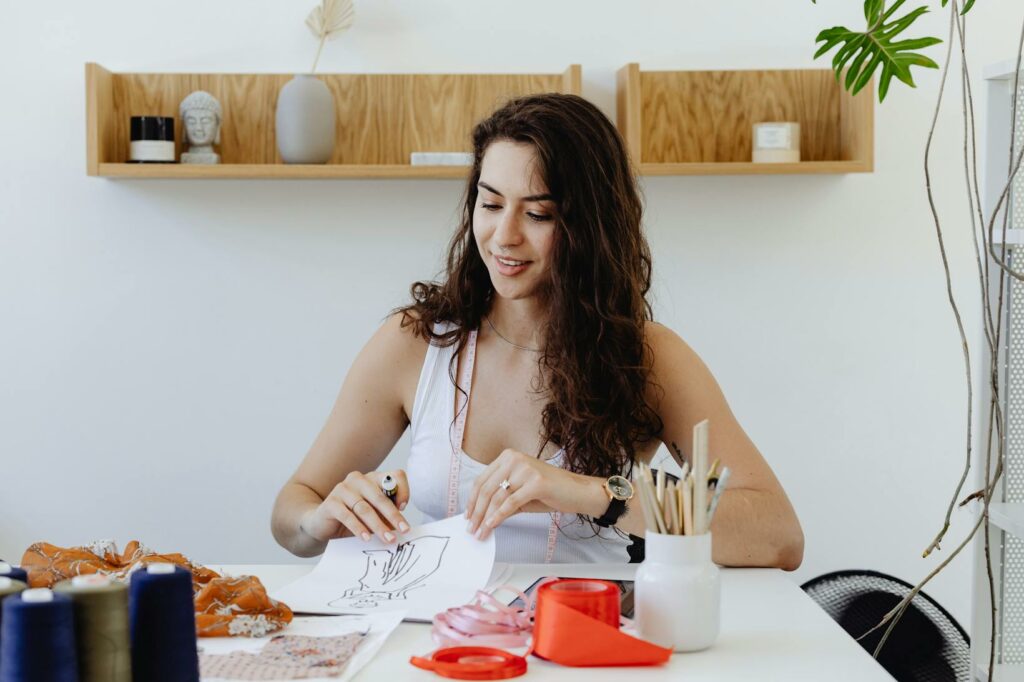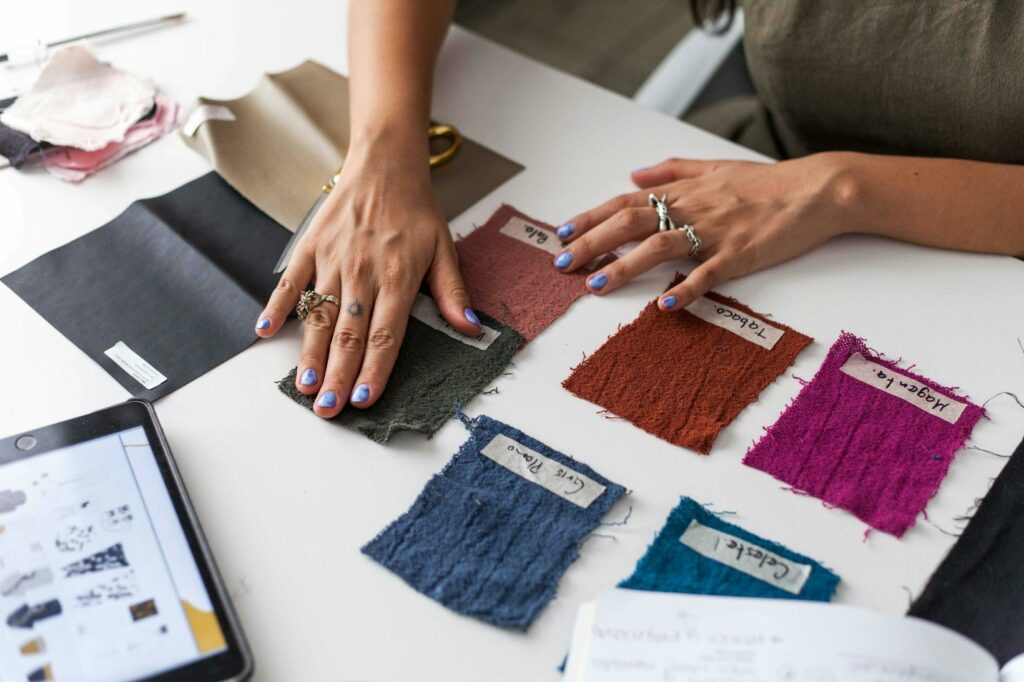Samba costumes are a lively and eye-catching part of Brazilian culture, showing off the energetic spirit that Brazil is known for. Bursting with bold colours, feathers, sequins, and beads, these outfits help dancers move freely and stand out on the parade routes.
In the early days, before the 1930s, Samba costumes were quite fancy, but as material costs went up, people started to simplify their outfits. The two-piece bikini, which became popular in the 1950s, made sense for Brazil’s hot weather and meant less material was used.
Things really kicked up a notch in 1970 with the opening of the Sambadrome, turning Carnival into a huge spectacle and inspiring more elaborate designs. The 1980s brought an explosion of colour and glitter, matching the larger-than-life vibe of the times.
Today, Samba costumes are smaller but more extravagant than ever, packed with decorations that capture the fun, excitement, and festive heart of Brazilian Carnival.
Origins of Samba and Carnival Costumes
Carnival first took root in Brazil through Portuguese colonists, who brought their festive traditions with them. The word “carnival” comes from the Italian for “to put away the meat”, marking the start of Lent when eating meat is off the table for a while.
At the start, Carnival was a gathering mainly for the Portuguese upper class. They wore fancy masks and costumes as they strolled through the streets, while the rest of the population watched from the sidelines. Outfits were luxurious and expensive, serving as a bold display of social standing. The inspiration behind these early costumes was very European, with characters like harlequins and masked comedians making regular appearances.
Over time, Carnival costumes gradually changed. By the 1930s, people from a wider range of backgrounds started to join the celebrations. As Carnival became more inclusive, costumes became less complicated and more affordable. The tropical climate and everyday realities meant simple, breezy outfits were the way to go. What began as imported European finery now shows off what makes Brazilian culture so unique—vivid colours, freedom of movement, and a spirit that has everyone, whether they’re dressed up or cheering from the crowd, swept up in Carnival’s colourful energy.
1930s: The Shift to Simplicity
During the 1930s, with the world gripped by the Great Depression, Samba costumes took on a simpler look. Money was tight and material prices climbed, so dancers had to be creative with their wardrobe. The solution was practical: strip costumes of extra bits, choose lighter fabrics, and keep things minimal. It was a win-win, really—more affordable outfits that also made the heat of Brazil’s summers easier to handle.
This period kicked off a new way of thinking about Carnival costumes. Lighter, less fussy outfits became the norm, helping dancers move more easily and stay cool. For a dance as lively as Samba, this change couldn’t have come at a better time. The lighter costumes let performers show off their quick steps and energy without overheating.
What happened in the 1930s set the stage for later changes. As the years rolled on and tastes changed, Carnival outfits kept finding new ways to balance being comfortable with looking dazzling on parade.
1950s to 1970s: The ‘Less is More’ Aesthetic
The 1950s saw the bold arrival of the two-piece bikini on Samba dancers, a choice that quickly caught on. Not only did this reveal more skin, but it just made sense in Brazil’s heat. Dancers loved the boost in comfort and freedom, and audiences couldn’t miss the new, daring look—one that matched Samba’s reputation for high energy and cheeky flair.
Carnival’s transformation continued in the 1970s with the creation of the Sambadrome, a huge venue built specifically for the festival parades. Instead of spontaneous street parties, Carnival became a grand, organised event. Suddenly, Samba schools were eager to outshine one another—and their costumes became bigger, flashier, and packed with even more detail each year.
With packed crowds and television cameras watching, designers started coming up with extraordinary outfits built around epic themes. Every detail mattered, and the spotlight encouraged bolder creativity and new levels of artistry. From this point on, Samba costumes weren’t just clothing; they were full-blown showstoppers, each year raising the bar on spectacle and style.
1980s Onward: Embracing Exuberance and Diversity
The 1980s brought an explosion of energy and style to Samba costumes that has rarely been matched. Designs ramped up to new heights—think bigger, brighter, and shinier than ever before. The costumes were practically sparkling under all the sequins and glitter, perfectly in sync with the go-all-out attitude of the decade. As fashion trends across the globe turned up the volume, Rio’s Carnival did the same.
This was also the era when the Sambadrome found its permanent home on Av Marquez de Sapucai. With the parade extended to two days in 1984, there was more time for dancers and crowds to soak up the carnival atmosphere and take in the spectacle of those jaw-dropping outfits.
Another important shift was happening on a social level. The 1980s became a time when Carnival started breaking old boundaries around gender and self-expression. Dazzling costumes were no longer just for women—men took to the parade with just as much flair, sometimes cross-dressing or experimenting with styles that stretched the rules of tradition. Carnival was a safe space to play with identity, and it welcomed everyone to join in. Outfits became more than just fancy dress; they turned into ways for people to show off both personal and group identity, filling the festival with even more colour, creativity, and joy.
Modern Day Samba Costumes

Modern Samba costumes make a statement by blending barely-there fabrics with over-the-top flair. Even though there’s not much material involved, what hits the eye are the showers of feathers, a shimmering sea of sequins, and colours so bright you could spot them from space. These costumes aren’t just made to turn heads; they’re built to let dancers move with all the freedom that Samba demands, keeping that unmistakable energy front and centre.
At the heart of this visual show are the Samba schools, whose designers compete to outdo one another with fresh ideas each year. Every outfit is their chance to say something bold, but they still have to obey Carnival’s rules. No full nudity is allowed, striking a balance between creative freedom and cultural respect. This rule isn’t there to spoil the party; it simply challenges designers to come up with looks that are daring yet still in line with tradition and the festival’s colourful story.
Thanks to this creative push-and-pull, today’s costumes thrive on surprise while never losing sight of their roots. Samba schools continue to walk the fine line between old and new, making each parade an ever-changing display that celebrates both the past and the thrill of now.
Reflections on the Evolution of Samba Costumes
Looking back at how Samba costumes have changed, you really get a sense of Brazil’s shifting moods, artistic vibes, and social changes. Exploring the changing styles of samba dance costumes over the decades, in the early days, these costumes were all about luxury—rich fabrics and impressive designs that made it clear Carnival was mostly an event for the wealthy. Everything was big, bold, and rather fancy, borrowing ideas from European styles.
That all started to change in the 1930s, as budgets got tighter. Out went the heavy fabrics and complex outfits, replaced with lighter, breezier looks that actually worked for Brazil’s hot weather. By the 1950s, when the two-piece bikini made its entrance, less really did become more— dancers needed comfort, and the skimpy new style became the norm for Carnival.
Things accelerated with the growth of the Carnival industry in the 1970s and the grand Sambadrome parades. Samba schools began to compete on a much bigger stage, pushing their costumes to be even more eye-catching, creative, and themed every year.
The 1980s cranked everything up. Outfits exploded with colour and glitter, and suddenly, the rules were more relaxed, with men and women confidently experimenting with different looks. Samba costumes became a way to show off identity, break out of old stereotypes, and celebrate everyone who wanted to join in.
Today, while Samba costumes keep getting flashier and smaller, they still stand for something far bigger. They capture the fearless energy, flair, and deep-rooted tradition of Carnival, proving that personal style and Brazilian spirit are always worth celebrating.



